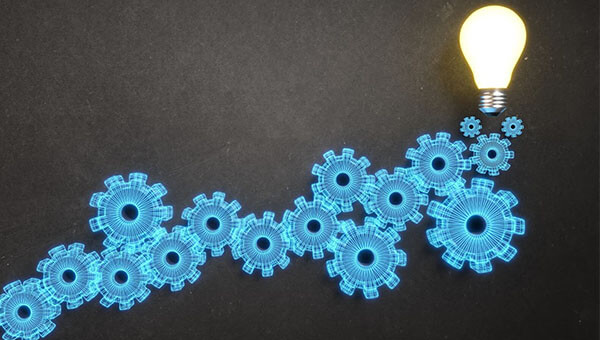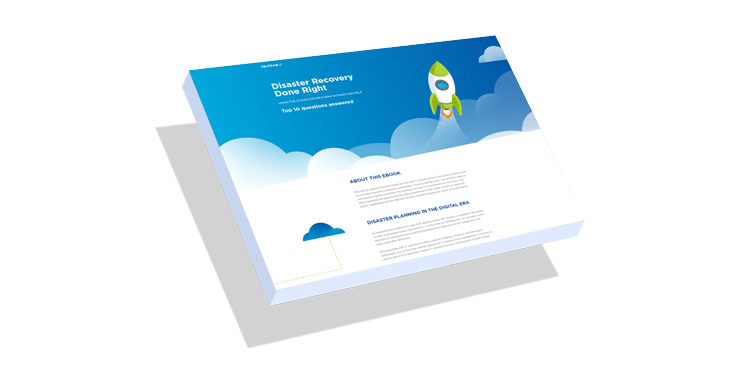The one constant in life is change.
Companies depend on IT services being able to evolve in order to survive. Some postulate that IT is the very lifeblood of the enterprise today. It’s difficult to argue the point; however, modernized IT is a pipe dream for some due to the inherent complexities that come with deploying, configuring, and maintaining cutting edge solutions. Technology is a beautiful thing to those who can afford it.
Fortunately, there have been several advances in technology that have closed the gap between needs and affordability. One such case is in the business continuity and disaster recovery (BCDR) market. No one questions the need for sound data protection and disaster recovery (DR) solutions in support of business critical workloads. However, all companies are faced with competing priorities - do they allocate additional budget for, say, virtual desktop infrastructure (VDI) to meet increasing demands in support of remote workers, or do they opt to employ a much-needed insurance policy in case of disaster and IT downtime? These are big decisions that are being made across the globe as companies navigate murky waters. But what if both of these priorities could be met without breaking the bank?
The answer to BCDR woes begins with hyperconverged infrastructure (HCI).
HCI ushered in a new model for building IT solutions, causing a dramatic shift in the way companies are thinking about supporting business critical operations, both live and in the case of disaster. No longer does business continuity imply vertical IT silos that create complexities and additional expenses. With HCI, applications and workloads run on a single platform that spans across the entire enterprise, breaking through traditional barriers while providing unparalleled availability, performance, and simplicity. As a result, BCDR solutions formerly relegated to multi-vendor patchworks have now become native services. The magic is in the architecture - one data fabric and one management plane means companies are able to run and protect their applications at any scale, regardless of location.
With Nutanix, supporting BCDR is really just a manifestation of the goodness that already exists in its Enterprise Cloud software stack. For example, both intra- and inter-cluster snapshotting and replicating of virtual machines is a native feature of Nutanix AOS. Turning up Protection Policies and Recovery Plans is accomplished in minutes through Nutanix’s unified management console, Prism. In the event of a disaster, companies are able to failover with a single click, allowing the platform to automate and orchestrate the entire process. For peace of mind, monitoring and failback are completed through the same pane of glass.
Disaster Recovery as a Service with Nutanix Cloud
For companies that do not wish to build out another datacenter, Nutanix has extended its core DR capabilities to the public cloud with Xi Leap. By running the same HCI software stack in the Nutanix Cloud, customers enjoy instant onboarding via a subscription-based disaster recovery as a service (DRaaS) solution. This cloud consists of a global footprint of datacenters that serve as DR target failover sites for on-premise Nutanix AHV or VMWare ESXi hypervisor VMs. The service provides guaranteed service level agreements (SLAs) for customers. Not only that, but continuous live failover testing is included to ensure a DR solution is ready when called upon. Furthermore, the same one-click failover and failback capabilities that exist in private cloud deployments exist with the Nutanix Xi Leap solution. DRaaS has never been easier or more affordable.
Take a Xi Leap Test Drive to see for yourself.
How About Integrated Data Protection, Too?
There is also Nutanix Mine, which leverages HCI for secondary storage. Mine tightly integrates a tiered storage architecture with the Nutanix software stack and manages it through Prism. Customers experience new levels of simplicity by unifying their primary and secondary data protection operations. The nagging issues of stitching together disparate software and hardware from multiple vendors is now a thing of the past. The solution also affords users increased visibility and access to secondary data, turning a potential liability (e.g., globs of lost data) into an asset. Deploying enterprise-grade data backup solutions used to be a difficult proposition, but not anymore - they are now a part of the unified Nutanix Enterprise Cloud fabric.
Take a Nutanix Mine Test Drive to see for yourself.
BCDR Made Easier with HCI
Companies are increasingly IT-dependent. Thankfully, gone are the days of cost prohibitive, difficult to manage IT silos required to support BCDR plans. Traditional solutions are being replaced with enterprise-wide hybrid clouds built on HCI and managed through a single interface. As a result, companies are enjoying simple, easy to deploy, resilient solutions that keep pace with increasingly stringent SLAs. As a pioneer in both the HCI and BCDR markets, Nutanix has consistently been a harbinger of delightful things for evolving businesses - a true friend to its customers throughout this journey.
Take a Test Drive to see for yourself.
© 2020 Nutanix, Inc. All rights reserved. Nutanix, the Nutanix logo and all Nutanix product, feature and service names mentioned herein are registered trademarks or trademarks of Nutanix, Inc. in the United States and other countries. All other brand names mentioned herein are for identification purposes only and may be the trademarks of their respective holder(s). This post contains links to external websites that are not part of Nutanix.com. Nutanix does not control these sites and disclaims all responsibility for the content or accuracy of any external site. Our decision to link to an external site should not be considered an endorsement of any content on such a site.

